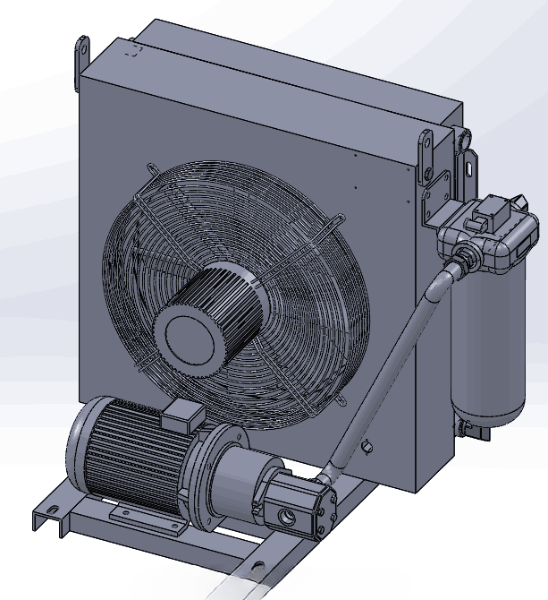Tube-Fin vs. Plate-Fin Oil Coolers: Key Differences
Both are common air-cooled oil cooler designs, but they differ in construction, efficiency, and ideal applications. Here’s a detailed comparison:
1. Construction & Design
| Feature | Tube-Fin Cooler | Plate-Fin Cooler |
| Core Design | Tubes (round/flat) with external fins | Stacked flat plates with integrated fins |
| Flow Path | Oil flows through tubes; air crosses fins | Oil flows between plates; air crosses fins |
| Materials | Typically, copper/brass tubes + aluminum fins | Aluminum or stainless-steel plates/fins |
Key Insight:
- Tube-fin is more robust for high-pressure oil systems.
- Plate-fin is lighter and more compact but may handle lower pressures.
2. Cooling Efficiency
| Factor | Tube-Fin | Plate-Fin |
| Heat Transfer | Good (depends on fin density) | Better (larger surface area per volume) |
| Airflow Resistance | Lower (easier air passage) | Higher (dense fins may restrict airflow) |
| Temp Control | Steady but slower response | Faster heat dissipation |
Key Insight:
- Plate-fin cools faster due to greater surface area but may need stronger fans to overcome airflow resistance.
- Tube-fin is better for consistent, moderate cooling.
3. Durability & Maintenance
| Factor | Tube-Fin | Plate-Fin |
| Pressure Handling | High (tubes resist burst pressure) | Moderate (plates can deform under high PSI) |
| Clogging Risk | Lower (tubes harder to block) | Higher (tight gaps trap debris) |
| Corrosion Resistance | Depends on tube material | Aluminum resists rust but weaker structurally |
Key Insight:
- Tube-fin is better for dirty environments (e.g., construction equipment).
- Plate-fin is prone to clogging if exposed to dust/pollen.
4. Cost & Applications
| Factor | Tube-Fin | Plate-Fin |
| Manufacturing Cost | Higher (complex brazing/assembly) | Lower (simpler layered design) |
| Best Uses | – Heavy machinery – High-pressure hydraulics – Diesel engines | – Automotive transmissions – Compact industrial systems – Aerospace/EV cooling |
Key Insight:
- Tube-fin is costlier but longer-lasting in harsh conditions.
Plate-fin is cheaper and space-saving for light/medium duty.
Which One to Choose?
Pick Tube-Fin If:
- You need high-pressure tolerance (e.g., hydraulic systems).
- Operating in dirty/dusty environments.
- Prioritizing long-term durability over cost.
Pick Plate-Fin If:
- Space/weight savings are critical (e.g., vehicles, aircraft).
- Cooling lower-viscosity fluids (e.g., transmission fluid).
- Budget is a constraint, and conditions are clean.
Hybrid Option
Some modern coolers combine both designs (e.g., tube-plate fin) for balanced performance.
